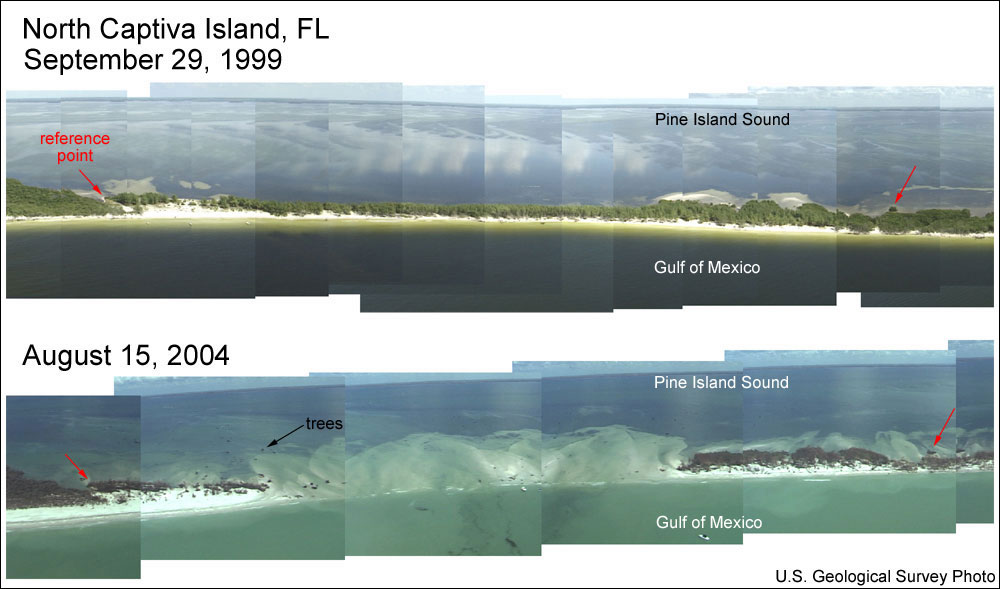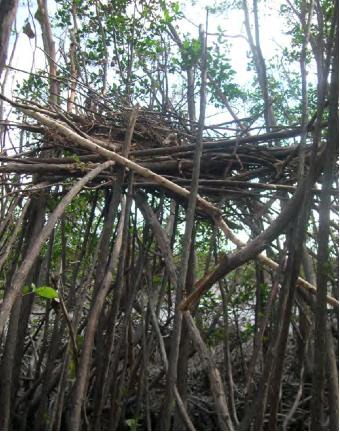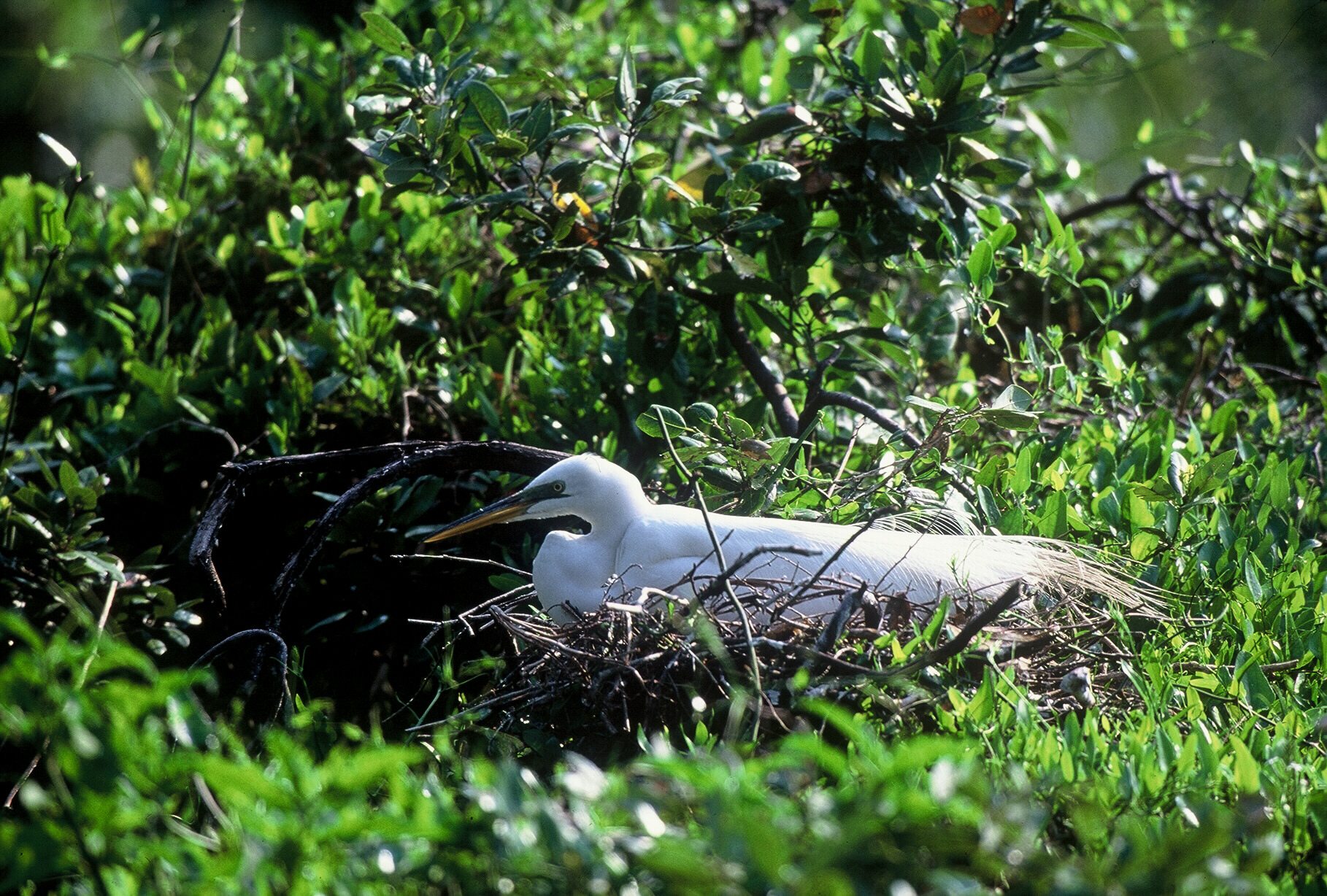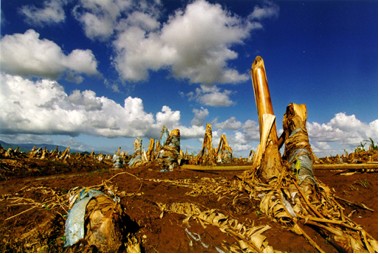Coastal Changes Coastal changes caused by hurricanes include beach erosion, dune destruction, overwash, inundation and island breaching, marsh erosion, and coastal cliff erosion. The narrowing of the beaches and erosion of sand dunes leaves coastal areas more vulnerable to future storms and threatens coastal properties and tourism revenue in coastal counties. This is incredibly significant as more than half the world's population lives and/or works within 200 km (120 mi) of the shoreline. Barrier islands are elongate, sandy islands that are separated from the mainland by open water in the form of estuaries, bays, or lagoons. They are valuable natural resources that provide recreational areas and protect the marshes and coastal estuaries during storms. As the outermost land exposed to hurricanes, barrier islands often lose significant areas of beach and marsh during storm events. In the southeastern United States, most of the inlets cut through barrier islands have been formed during hurricanes.
The Louisiana barrier island shoreline is eroding at a rate, in some places, exceeding 20 meters per year as a result of both hurricanes and normal processes. Erosion of the barrier islands is so severe that their ability to function as effective buffers for the prevention of wetlands loss has been dramatically reduced. Louisiana's wetlands are disappearing at rates of 40 square kilometers per year. In a few decades the barrier islands may be gone and the wetlands will be lost at an even faster rate. Impacts to Coastal Forests and Wetlands
Hurricanes can also have major impacts on the structure and function of coastal forest and wetland ecosystems. Coastal forest ecosystems, including upland forests, mangrove swamps, hardwood hammocks, and forested wetlands often sustain substantial damage from hurricane winds, which can uproot trees and completely defoliate vegetation. Hurricane-induced storm surge can also transport salt water, sediment, and other organic matter inland to brackish wetlands and low-lying terrestrial areas. In South Carolina, 1.8x106 ha of coastal forests were damage by wind and water associated with Hurricane Hugo (1989). Hurricane Andrew (1992) caused significant damage to the coastal forests of Florida, the greatest of which occurred in the mangrove forests of the Everglades (as they were exposed to higher wind energies than inland forests). Coastal mangrove forests are critical ecosystems that provide important habitat for many endangered and/or commercially important species, and their thick root systems also trap and bind sediment, stabilizing shorelines. After the passage of Hurricane Andrew, almost 100% of the mangrove trees displayed some visible structural damage. High winds and tidal surges caused about 60% of the trees to become either uprooted or broken, and about 25% of the unbroken, upright trees were dead. The loss of the mangrove canopy resulted in the die-off of associated epiphytes and algae characteristic for the ecosystem. More recently, Hurricane Wilma impacted south Florida in October 2005. Although Wilma was weaker in intensity (Category 3 at landfall) than Andrew (Category 4 at landfall), biological impacts appear to be similar or greater, and over a more widespread area. Hurricane Wilma had an eye that was over 128 km (80mi) wide, 4 times the size of Andrew’s eye, and thus, destructive winds and surge were more widespread. When hurricane winds destroy a large fraction of the forest canopy, the light, temperature, and humidity levels of the forest change dramatically. A dense forest that was once cool and damp becomes an open area full of light, with high temperatures, low humidity, and enhanced exposure to wind and rain. Fruits, flowers, and leaves disappear for varying periods of time. In effect, the forest structure shifts and the understory disappears. This has great implications for birds, lizards, and other animals, especially with regards to food availability and predation. Cavity-nesting birds species can be especially hard hit because the trees in which they nest often blow down or are snapped off at the cavity. When Hurricane Hugo hit the Carolinas in 1989, it destroyed most of the areas’ nesting trees for the endangered red-cockaded woodpecker (Picoides borealis) . One forest lost 87% of its nest trees, and 67% of its woodpeckers. Each animal species will, however, react to these changes differently. After the passage of Hurricane Hugo in Puerto Rico, frogs increased rapidly in numbers (to values 6x higher than pre-hurricane conditions). However, in El Verde, Puerto Rico, bird species and bats that fed on fruits and nectar exhibited a large reduction in their numbers after the hurricane. This was either due to a lack in available food resources and/or the migration of animals to areas less affected by the hurricane. The Jamaican fruit bat (Artibeus jamaicensis) left the area after Hurricane Hugo and did not return for 2 years. Population numbers for the greater Antillean long-tongued bat (Monophyllus redmani) actually increased dramatically after Hurricane Hugo, as the animals took advantage of rapid flowering by some plants in the open forest. It took 5 years for populations of the red fig eating bat (Stenoderma fucum), endemic to the area, to restore its numbers to pre-hurricane levels. However, the passage of Hurricane Georges through the area in 1998 again decreased the numbers of this bat speces in this area. Four years after Georges, there was still no sign of their recovery. Direct and Indirect Effects on Bird Populations Each year, millions of birds migrate across or near the Gulf of Mexico coast, moving between summer breeding grounds in the north and wintering grounds in the Central and South America. The long migration between temperate and tropical areas is difficult, and migrating birds require periodic stopovers to rest and refuel. Finding favorable habitat and resources is critical in building up and sustaining biological fat reserves, the fuel used by birds for their long-distance flights. Wooded habitats and wetlands (up to 100km [62 mi] inland) along the Gulf of Mexico are primary stopover habitats for migratory bird species. Much of the North Atlantic hurricane season coincides with the fall bird migration, and major storm systems often develop when bird migration over the Gulf of Mexico is at its peak. Therefore, hurricanes can dramatically impact annual migration patterns and overall survival for migratory species. Strong hurricane winds can kill birds and/or carry them far beyond their normal range. For bird species that overwinter along the Gulf coast, the loss of their roosting, cover, and feeding sites might alter their survival during the winter. Birds may also relocate to areas less impacted by a storm. Hurricane Katrina (2005) made landfall near the Pearl River Delta region of Louisiana and Mississippi during the autumn migration, toppling trees and defoliating the area’s forested wetlands. The combination of high winds, salt spray, and storm surge rendered many areas uninhabitable, as there was no foliage, no insects, and no fruit-bearing trees and shrubs. Shortly after the hurricane and up to several weeks after the hurricane’s passage, birds known to use the Pearl River Delta as a stopover point during their migration were found to have increased their use of other, less-disturbed woodlands in the area. About 5 weeks after Katrina, though, when much of the surviving forest had started to resprout new foliage, a corresponding increase in migrant use of the forested wetlands was also observed.
In addition to impacting migratory birds species, hurricanes also affect wading birds, gulls, terns, and shorebirds, which dominate coastal wetlands. Storm-induced mortality for these birds appears to be greatest when hurricanes strike during the breeding season. Birds nesting on beaches may be especially disturbed by hurricanes as most of these birds nest directly on the ground, and these habitats are likely to be severely affected by wind and wave action during tropical events. Species are usually affected by the extent to which the vegetation they nest in is damaged, as well as by their ability to reconstruct destroyed nests after the storm. Hurricane Hugo made landfall in South Carolina in the September of 1989, 80 km (50mi) southwest of Pumpkinseed Island, a breeding area for several bird species. An estimated 60-75% if the aboveground woody biomass of marsh elder (vegetation used for nesting by breeding great and snowy egrets) had been stripped from its roots and a thick layer of debris covered much of the remaining elder. Most of the island’s herbaceous vegetation, however, was not significantly disturbed (this vegetation is used for nesting by breeding white and glossy ibises and tricolored herons). Population densities of two of the five principal breeding species at the site, great egrets and white ibises, declined substantially during the two breeding seasons following Hurricane Hugo. Almost certainly, the decline in great egrets (Ardea alba) was related to the destruction of nesting substrate. Unlike other species at the site, these birds nest almost exclusively in marsh elder, which was wiped out by the storm. Regeneration of the marsh elder on Pumpkinseed Island to pre-storm levels by the spring of 1993 occurred coincidentally with the reestablishment of pre-storm breeding populations for the species. Unlike the egrets, however, the decline in white ibis ( Eudocimus albus) numbers was not due to an impact on nesting habitat, but from the impact on the species’ freshwater prey, crayfish. During the breeding season, White Ibises are forced to travel long distances inland to find sources of freshwater prey for their young. The storm surge that accompanied Hurricane Hugo inundated many of the natural freshwater wetlands used by foraging ibises in coastal South Carolina, substantially reducing crayfish availability in the region. By the spring of 1991, as crayfish populations in the region had begun to rebound, ibises once again bred on Pumpkinseed Island, although numbers were <10% of the pre-storm average. Even when crayfish populations appeared to have returned to pre-storm levels in 1993, white ibis breeding effort at the island was only about 50% what it had been before Hurricane Hugo. This may have been related to the fact that individuals may have bred elsewhere in the wake of the storm, returning to their new breeding sites (unless or until they failed at this new location), rather than return to Pumpkinseed Island.
Birds that are not killed or displaced by a hurricane, my starve to death because they are unable to forage while the weather is poor or because resources have been depleted. Diet appears to be a significant contributor to bird declines, with substantial impacts to nectar, seed, and fruit eating species. Bird species that depend on nectar and fruit for food suffer the greatest declines following a hurricane presumably because these food sources are scarce following a storm. Bird counts 8 months after Hurricane Hugo (1989) in the US Virgin Islands showed a significant reduction in birds, although the number of species did not change. A higher proportion of nectavores (nectar drinking birds) and frugivores (fruit/seed eaters) declined after the hurricane. Populations of most species had recovered by the beginning of the next breeding season, again suggesting that many individuals had temporarily moved to areas outside the impacted area after the storm. Although excessive wind and rain associated with hurricanes can kill birds, the return of most bird populations to pre-hurricane numbers within 6-10 months after a storm suggest that reductions in populations are mostly due to bird movements rather than mortality. For breeding birds, recolonization of areas following a hurricane may be slow, since birds that breed elsewhere during adverse conditions will continue to do so until conditions in the new area become unfavorable. Impacts to Agriculture As hurricane winds, rainfall, and storm surge cause direct and indirect effects on the environment, this can also impact agriculture. The losses can be due to direct destruction of vegetation, crops, orchards, and livestock, or indirectly through long-term losses of soil fertility. Tropical fruit trees are among the most vulnerable crops to hurricane damage. Bananas and plantains are particularly susceptible to damage from high winds. However, although these trees may become completely defoliated, they will usually resprout again from their base and begin to produce fruit relatively quickly. The situation is far different for tropical tree fruits like avocado, mango, and papayas. For these crops, not only can fruit be easily knocked off the trees, but the fruit themselves are quite perishable, and they deteriorate more quickly once they are blown of the tree. Also, tree branches for these crops are easily broken and/or entire fruit trees can be snapped off or blown over by hurricane winds. This causes their root systems to become dislodged from the soil, and in nearly all cases, this destroys the root system, killing the trees. Unlike bananas, these trees take many years to return to their previous size and productive capacity. Hurricane Mitch ravaged Central America in 1998, and some areas received nearly half of their annual rainfall in one week (rain fell at a rate of 1-2 feet per day in some mountainous regions). In Honduras, at least 70% of the country’s crops were destroyed, including 80% of the banana crop. Large warehouses and storage rooms for coffee were flooded, and maize and corn crops devastated. Overall, crop losses were estimated to total $900 million (1998 USD) and the damage caused by Mitch to Honduran agricultural production was so great that its recovery was estimated to take many years. In Nicaragua, at least 30% of the coffee crop was destroyed due to Hurricane Mitch, and beans, sugar, and banana crops were also devastated.
|






